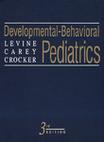发育行为儿科学
1999-1
Oversea Publishing House
Levine, Melvin D. (EDT)/ Carey, William B. (EDT)/ Crocker, Allen C. (EDT)
929
无
The decrease in mortality and morbidity from infectious illness among children has shifted the focus of pediatric medicine to developmental and behavioral problems for parents and health professionals. The American Board of Medical Specialties and the American Board of Pediatrics have just this year recognized the new subspecialty of developmental-behavioral pediatrics and are developing criteria for board certification. The publication of the third edition of Developmental-Behavioral Pediatrics is therefore quite timely. It is a comprehensive overview of the field by 121 experts. The book aims to reach both general pediatricians and subspecialists engaged in research and teaching in this relatively new field. The editors emphasize the inseparable connection between development and behavior and the range of variations in these two attributes of childhood. The book is divided into eight parts. The first consists of nine chapters on the main developmental stages of childhood and parenthood and the effects of temperament and sex. The next three sections (25 chapters) cover the effects of environment, biology, and illness on development and behavior. Parts 5, 6, and 7 are especially targeted to clinicians. The 29 chapters in part 5 focus on specific behavioral outcomes during childhood, ranging from colic to attentional problems, mental retardation, and autism. The sixth section (10 chapters) describes assessment techniques, the seventh (11 chapters) describes specific treatments, and the eighth covers legal and ethical issues. This book strives to be comprehensive and definitive, but the effort to reach both clinicians and researchers causes the results to be uneven. The initial sections are too theoretical for clinicians, and the later sections do not provide a critical review of research. Many of the chapters are excellent, particularly the reviews of psychopharmacology, the effects of nutrition on behavior, eating disorders, attention and school-aged children, early intervention, and hypnosis. In view of the prevalence of suicide and homicide among children, more detailed coverage of these topics could have been provided, particularly with respect to the influence of the media and gun-control legislation and the efficacy of recent interventions aimed at preventing youth violence. In addition, innovations in pain relief and analgesia are not covered in sufficient detail. The limited reimbursement from managed-care organizations for the time-intensive evaluation and care of children with developmental behavioral problems is an important issue for general pediatricians and subspecialists and is not adequately addressed. The chapter on obesity does not discuss the increased risk of type 2 diabetes among obese adolescents. Despite these lapses in covering specific topics, Developmental-Behavioral Pediatrics should be a marvelous resource for all physicians caring for children.
PART Ⅰ Patterns of Variation Over Time 1 The Development of Behavior 2 Pregnancy, Birth, and the First Days of Life 3 Infancy and Toddler Years 4 The Preschool Years 5 Middle Childhood 6 Adolescent Development and Behavior: Implications for the Primary 7 Evolving Parenthood: 8 The Development of Behavioral Individuality 9 Effects of Gender on Behavior and DevelopmentPART Ⅱ Milieux and Circumstances 10 Culture and Ethnicity 11 Variations in Family Composition 12 Brothers and Sisters 13 Adoption and Foster Family Care 14 Critical Life Events: Sibling Births, Separations, and Deaths in the Family.. 15 Separation, Divorce, and Remarriage 16 Family Function and Dysfunction 17 The Neighborhood: Poverty, Affluence, Geographic Mobility, and Violence 18 Electronic Media 19 Disasters 20 Schools as Milieux 21 Child CarePART Ⅲ Biological Influences 22 Genes, Behavior, and Development 23 Chromosomal Disorders 24 Down Syndrome: Care of the Child and Family 25 Congenital Anomalies……PART Ⅳ Effects of Medical IllnessPART Ⅴ Outcomes During ChildhoodPART Ⅵ Assessing and Describing VariationPART Ⅶ The Enhancement of Devlopment and AdaptationPART Ⅷ Legal and Ethical IssuesIndex

无